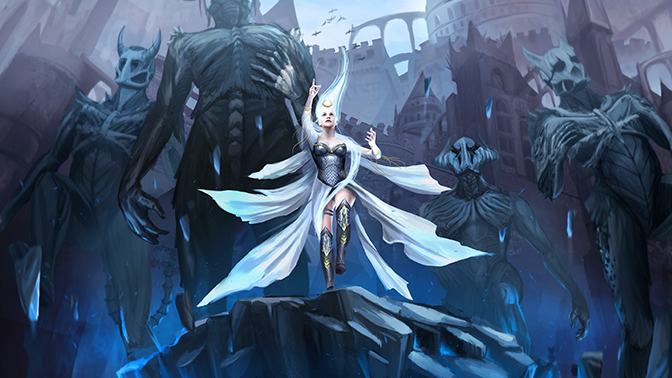To say that HBO’s A Game of Thrones is a hit is, at this point, an unde rstatement. People are downright rabid about the show! People who would ordinarily have nothing to do with a story of medieval drama are absolutely crazy about the violent, intriguing, and tragic world in George R.R. Martin’s books.
rstatement. People are downright rabid about the show! People who would ordinarily have nothing to do with a story of medieval drama are absolutely crazy about the violent, intriguing, and tragic world in George R.R. Martin’s books.
What better way, then, to attract new people into the hobby of tabletop roleplaying games than a game set in the world of Westeros?
Though the game has been out for over six years, A Song of Ice and Fire Roleplaying (SIFRP), by Green Ronin Publishing, is a great introduction to the hobby that makes full use of Martin’s work. The latest printing, called the Game of Thrones Edition, is over 300 pages of gaming greatness, and includes everything a group of new gamers would need to start having their own adventures in Westeros.
Aside from the hugely popular setting, SIFRP has a solid, straight-forward system at its core to ease players into the hobby. Players roll six-sided dice equal to the rating of whichever ability they’re using, whether swinging a sword or seducing a noble. If the player’s character has any specialities in the particular task, bonus dice can be added that can replace lower rolls from the ability dice. If the total meets or exceeds the difficulty (either set by the Narrator or the result of another character’s roll), then the player succeeds. Player characters have a number of Destiny Points that they can use to adjust their dice-rolling or even alter the narrative of the game…say, by having a character fall and break his legs, instead of breaking his neck.
Although SIFRP’s system (named the Chronicle System) was built specifically with Martin’s books in mind, the system does a fine job of emulating medieval-style roleplaying. Filing off the serial numbers would be easy enough, leaving a system quite capable of handling a game set in Medieval Europe without all the magic, monsters, and over-the-top heroics inherent in other fantasy role-playing games like Dungeons & Dragons.
SIFRP’s system also does a fine job of translating the various themes and plot devices from the series into its mechanics. The politics and intrigue of the series is translated into what is essentially “social combat,” using skills like Persuade and Deceive instead of swordsmanship or archery, inflicting Influence instead of damage, and causing your foe to do what you’re asking, instead of merely dying. Groups of players collaboratively create a minor noble house during character creation. A few rolls on some tables, a little brainstorming, and in moments, the group will have a complete noble house, with a history, holdings, and notable personalities. There are rules for mass combat to simulate the great battles throughout the books. And the game has an interesting spin on combat to emulate the series’ lethality without ruining the fun: players can soak damage by accepting short or long-term injuries, such as, for example, a disfigured face.
The “default” campaign in SIFRP, as mentioned above, has the players portraying the men, women, and/or children of a minor noble house in the years just after the War of the Usurper when Robert Baratheon ascended the throne, before the events of the first book/season of the series, A Game of Thrones. This setup is flexible, however, and the book even offers guidance for campaigns built around Brothers of the Night’s Watch, mercenary companies in the Free Cities, or even playing as Wildlings beyond the Wall!
Even if your particular target is a lost cause when it comes to bringing him or her into the wonderful world of roleplaying games, SIFRP is a great purchase just for the fan service alone. The artwork in the Game of Thrones edition is gorgeous and evocative. There are dozens of pages of description about the history and customs of Westeros, right down to minute details like how a family coat-of-arms is made. And, should your fandom be really rampant, there are plenty of great sourcebooks for the game already that further expand on the world.
With its straightforward, D6-based system, SIFRP is a fine RPG, but it does have some limitations. The game lays right in the middle of the complexity spectrum, meaning it could be too complex for more story-oriented gamers but not quite detailed enough for more simulationist types. This middle-of-the-road approach is ideal for new gamers who may not know exactly what style of play they’re into yet, but veteran groups that know what they want in an RPG may be able to find a game more suitable to their playstyle and merely use Westeros as a setting. Even if that’s the case, though, A Song of Ice and Fire Roleplaying makes for a great Westeros campaign book, and it’s still an easy recommendation for anyone into A Game of Thrones….in other words, a lot of people.

